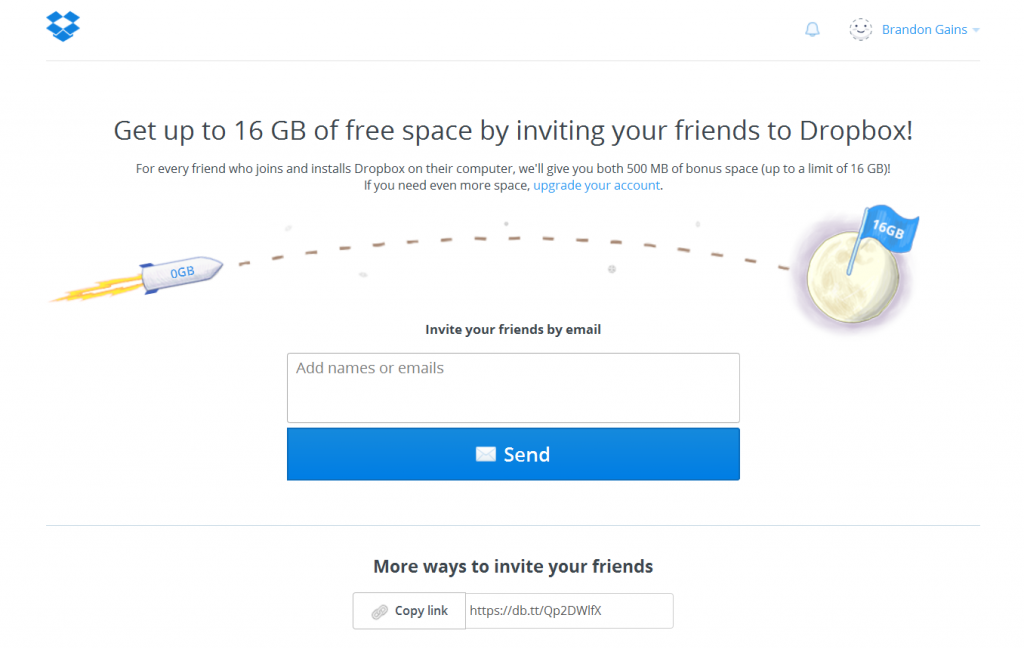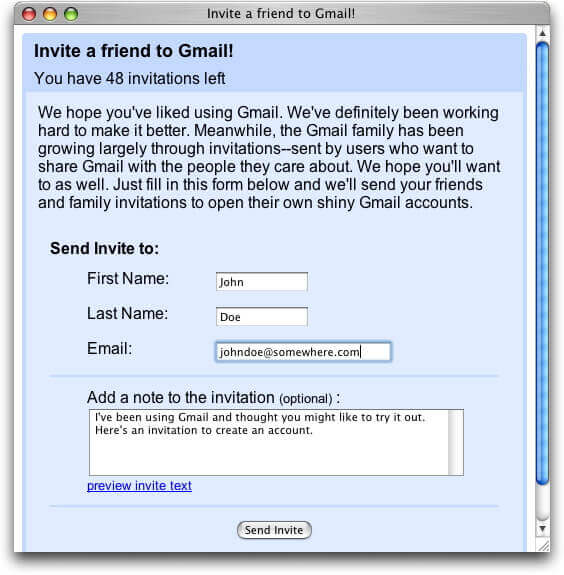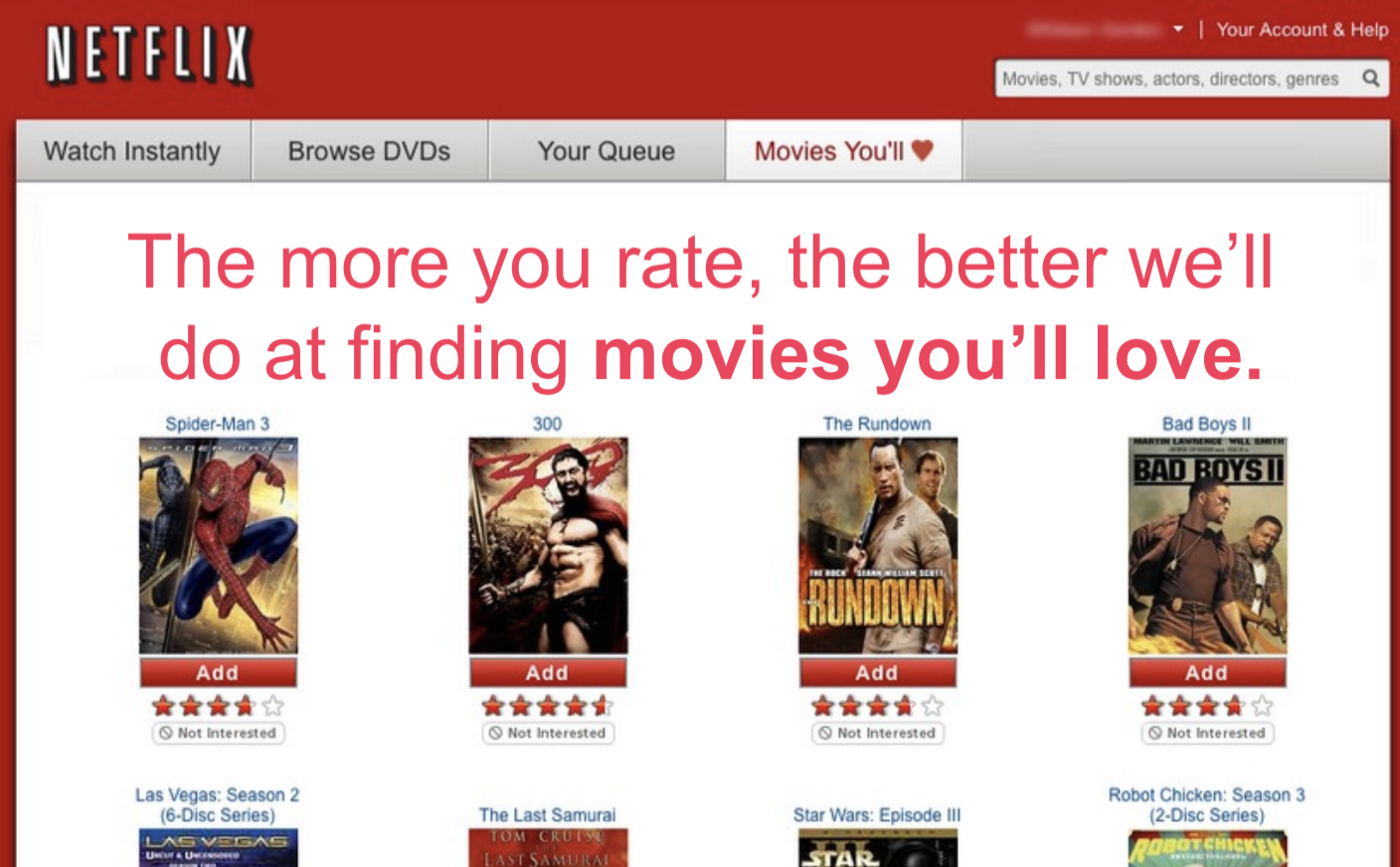Why You Should Read This Guide
- Find out what growth marketing is and how it differs from growth hacking
- Explore the benefits of growth marketing and the framework you can use to implement it for your business
- Learn about growth marketing techniques you can use for your business to increase revenues and sales
- View growth marketing techniques at play with a showcase of real-world examples
What is Growth Marketing?
Unless you’re a well-recognized brand with broad awareness, you have a long marketing journey ahead of you in terms of business competition.
According to Statista, brands collectively spend over $200 billion on marketing each year in the U.S. With so many voices clamoring for customers’ attention, it’s challenging for your business to stand out.
Growth marketing places the proverbial megaphone in your hand by helping you shift to an integrated approach to growing your business. It involves optimizing your content marketing efforts through constant testing across marketing channels. The goal of growth marketing is to identify new opportunities to help build and engage your business’ audience.
Brands that employ growth marketing strategies instead of relying exclusively on traditional marketing techniques experience more success in a shorter time frame.
Beyond conventional methods for acquiring customers, such as creating an ad and landing page, sending out an email blast, and running a Google Ads campaign with the same 50 keywords, growth marketing campaigns consist of short, data-driven experiments.
How can you use growth marketing?
Growth marketing is a process of rapid experimentation across marketing channels and product development to identify the most efficient ways to scale up a business. It merges the marketing, sales, and customer success teams in a shared purpose of bringing about business growth.
The “growth” in growth marketing can mean different things depending on your business goals. It could be:
- Cultivating an email list
- Adding more users
- Getting more click-throughs
- Increasing advertising conversions
- Growing user engagement
- Boosting revenue
- Gaining brand recognition
The key is to start small and get information on the most effective marketing efforts. Then, focus on the channels the collected data supports.
The constant cycle of analyzing data and feedback on what’s working and what isn’t differentiates growth marketing from traditional strategies of making a product, then marketing it. It focuses on marketing, then analyzing, then remaking, and then remarketing. It helps you anticipate change and plan your strategies to make constant improvements.
Growth marketing vs. growth hacking
Sean Ellis coined the phrase “growth hacking” to differentiate the niche marketing startups need from the broader world of startup digital marketing.
Growth hacking focuses on short-term results, while growth marketing focuses on the bigger picture.
Here’s everything that makes the two approaches different:
- Growth hacking is about rapid success, focused primarily on customer acquisition, while growth marketing seeks to achieve long-term progress with a combination of full-funnel strategies.
- Growth hacking uses data to experiment and refine an outcome, while growth marketing uses data to map patterns and develop a strategy.
- Growth hacking is a more hands-on approach with continuous testing and tweaking, while growth marketing believes in automating processes and making periodic adjustments.
- Brand goals and pain points play a central role in growth hacking, while growth marketing focuses on customer pain points.
- The strategy has a bad reputation among some marketers for prioritizing quick wins over long-term success.
Growth marketing combines marketing techniques with the tactical elements of growth hacking to make way for a brand-new approach to business growth—the techniques change as your business grows.
For startups, it’s all about rapid growth—testing and innovation. At the enterprise level, growth marketing focuses on incremental changes, since even a small increase in conversion rates can result in massive growth opportunities.
Benefits of growth marketing
Here are some of the many benefits you stand to gain through a growth marketing mindset.
- Cross-functionality: Growth marketing involves cross-functional collaboration. The marketing team plays a central role, as do the product, sales, customer support, and analytics teams.
- Better decision-making: Growth marketing removes the gut feeling that is so prevalent in traditional marketing techniques. With growth marketing, you’re employing a data-packed approach to marketing that shows what works and what doesn’t to help you make better decisions.
- Clear customer understanding: Growth marketing focuses on understanding the customer journey, delivering better experiences, and establishing personal relationships with the customer—ultimately enhancing your reputation.
- Flexibility: Scalability is at the heart of all growth marketing strategies. You can scale up or scale back your marketing efforts according to your cash flow instead of blindly spending money on PPC campaigns.
- Drive revenue: With sustainable progress at its heart, growth marketing focuses on agile goals to drive revenue. Instead of shooting in the dark, growth marketing seeks promising targets and works toward achieving them strategically.
To enjoy all these benefits, you must master the framework to implement the techniques. The most common framework used for growth marketing is called AAARRR.
The AAARRR framework for growth marketing
The Pirate Funnel, or AAARRR, is one of the most popular growth marketing frameworks/funnels. AAARRR is an acronym for Awareness, Acquisition, Activation, Retention, Referral, and Revenue. Growth marketers use the funnel to holistically understand the and find opportunities for growth hacking. It consists of the following steps.
-
- Awareness. How many people are you reaching? Increase brand visibility by using social media and outreach.
- Acquisition. How many people visit your landing page/website? Your goal at the acquisition stage is to find the right leads and turn them into customers. Use content marketing, PPC ads, and other social media channels to acquire more customers.
- Activation. How many visitors take action? Focus on personalization and conversion rate optimization to convert visitors into customers. Pay attention to metrics like active users, abandonment rate, and activation rate.
- Retention. How many people come back for more? This stage is about providing consistent value to customers to reduce churn rates—it involves proactively handling the customer experience. Use re-engagement campaigns, a strong support knowledge base, and rewards and promos to keep the customers you’ve acquired.
- Revenue. How many people start paying? And how much do they pay? This stage enhances
customer lifetime value by delivering better experiences, increasing average order values, and improving retention rates.
Focus on your pricing and use upselling and cross-selling strategies to increase revenues. Relevant metrics at this stage include monthly recurring revenue, annual recurring revenue, and revenue churn.
- Referral. How many people refer friends to your business? You need to leverage your customers’ loyalty to help them market your brand for you at this stage. Net promoter scale and customer referrals are essential metrics at this stage.
The framework helps you identify the weakest link for your business and focus on improving it. Because all customers flow through each of the six steps, you can easily find the gaps in your business.
With the framework in mind, let’s move on to growth marketing strategies you can use to drive revenue for your brand.
Growth marketing tactics
Referral programs
Using referral programs involves rewarding your existing customers for converting their friends, family, and contacts into new customers for you.
When Dropbox had difficulties acquiring customers, they used referrals as a growth marketing strategy. Instead of charging users for more space, which conventional business logic would dictate, the cloud storage company offered users storage space in return for introducing them to new users.
For every “friend” existing users introduced to Dropbox, users would receive an extra 500MB of free storage with a total limit of 16GB. Users who signed up for the free version of Dropbox could earn up to 16GB of free storage space, compared to the default 2GB limit.

The referral program was so successful that it drove 3900% growth in only 15 months. By allowing Dropbox users to refer to friends and family 32 times and build free storage of up to 16GB, the company incentivized every user to spread the word.
FOMO
Most successful growth marketing strategies have one thing in common—they emotionally incentivize people to take action.
Fear is one of the most powerful emotions to exploit because people prioritize loss aversion much more than they value gain. That’s primarily why fear of missing out is such an effective marketing strategy.
When Gmail was the new kid on the block, its competitors Outlook and Hotmail had a firm hold on market share. But the underdog quickly beat the giants, and a significant contributor was FOMO.
Early on, Gmail had exclusive invite-only access. While Gmail was growing through word of mouth because it provided an exceptional experience, people knew that not anyone could sign up and start using it—they had to get invited.
Every Gmail user could invite up to 50 of their friends, and the invite-only policy was so alluring that beta testers auctioned off invitations on eBay.

When it launched, Facebook also operated on an invite-only basis. Then, it gradually opened up to different universities across the U.S. The rest is history.
Innovation
Creating a new, user-friendly product that fills a need helps you pivot your business while bringing your customers along for the ride.
Innovation enabled Google to turn Chrome into the world’s leading web browser. In 2008, Microsoft’s Internet Explorer remained the most widely used browser with a 60% market share, with Mozilla’s Firefox coming in second place.
When Google launched Chrome on Sept. 2, 2008, it only had a minuscule 0.3% market share. Ten years later, Chrome had a market share of more than 70%, and virtually nobody was using Internet Explorer—the browser retired on June 15, 2022.
Personalization
Personalization helps you enhance customer experience, build loyalty, boost conversion rates, decrease cart abandonment, and increase average order value.
Segmenting your audience, understanding each segment’s needs and desires, and tailoring your product/offer to suit their needs makes personalization an effective growth marketing strategy.
Spotify used data and machine learning to help users discover more music, make recommendations based on what they already like, and personalize the experience. This approach has helped get
422 million unique users as of Q1 2022.
Netflix also became the giant it is today by being one of the first streaming platforms to use big data and personalization to recommend content and keep users engaged.

Combine creativity and data
Growth marketing is a constant loop of feedback and iterations. You can’t assume identical advertising or messaging will work forever and bring the same results. Marketers must be willing to try new things based on the feedback gained from analytics and customer surveys. Sure, there’s creativity involved, but it requires problem-solving and not randomly making changes in hopes something will work.
An experienced growth marketing team looks at everything that goes on in your company with a marketing mindset. They look for opportunities to get feedback and data. Take every opportunity to revisit your marketing plan and tweak it for more growth.
To succeed, your marketing team should combine focused data analysis and traditional tactics. Here’s what the different roles look like.
- The product development team pays attention to requests for features, upgrades, and complementary product lines, and their upcoming plans and goals can benefit marketing campaigns.
- The analytics team tracks valuable metrics and data that motivate marketers to try something new with their digital campaigns.
- The customer support team remains in constant contact with users, and in all these conversations, they get a marketing lesson or two. They share customer praise and concerns to help the company grow.
Use growth marketing to drive business success
Growth marketing is the agile testing-driven alternative to the traditional top-of-the-funnel-focused marketing techniques.
It helps your business multiply by making and implementing quick changes. However, growth marketing isn’t only for startups. It works just as well for larger, more established companies.
Whether you’re a startup or a big enterprise, Instapage helps implement your growth marketing strategies.
The Instapage platform is a landing page builder designed for businesses with small budgets and growing teams. It also helps enterprises elevate their marketing strategies by personalizing and optimizing your landing page at scale by leveraging the only solution that includes a market-leading, custom-tailored conversion service.
Try it out for your business and request your consultation today.
